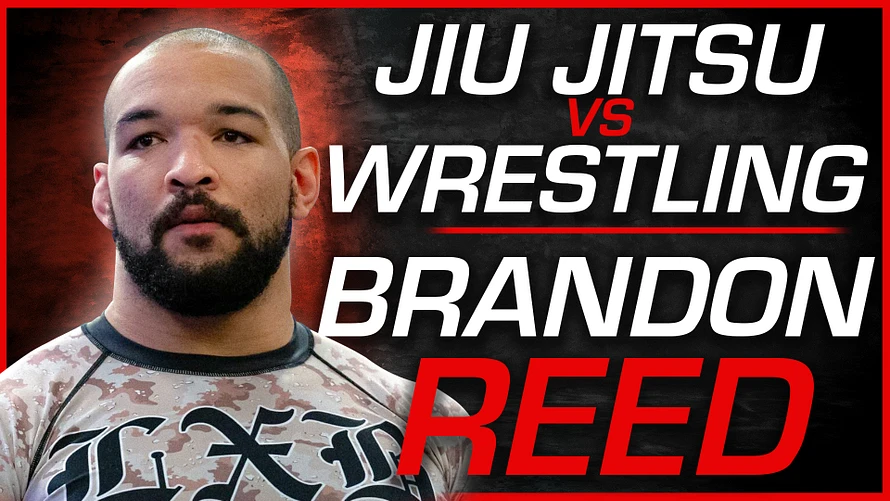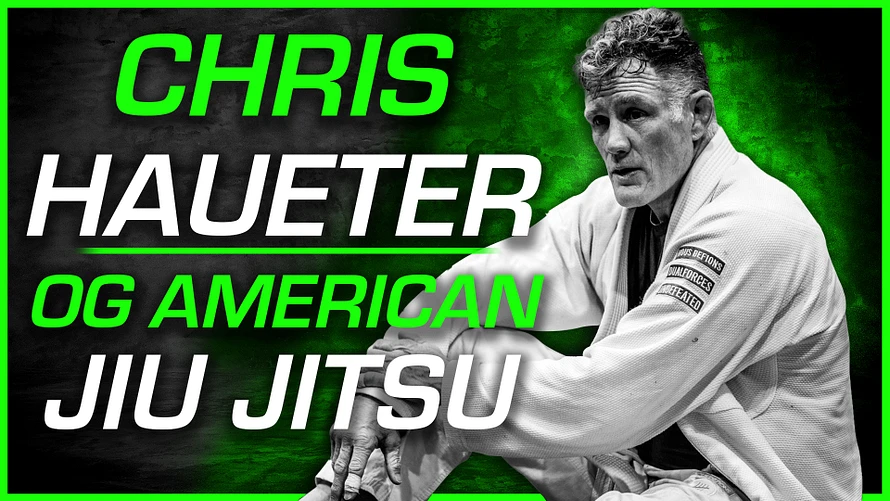Building a Sustainable Career in Jiu-Jitsu: Insights from Kendall Reusing

Professional athlete, entrepreneur, and commentator Kendall Reusing shares invaluable insights on building a multifaceted career in the world of Brazilian Jiu-Jitsu. From competing at the highest levels to developing successful business ventures, Reusing's journey offers a masterclass in creating a sustainable career in martial arts. Here are the key takeaways from her conversation:
The Power of Authenticity in Brand Building
Throughout the interview, Reusing emphasizes the importance of authentic self-expression in building a personal brand. Rather than trying to craft a carefully curated image, she advocates for treating social media as a journal, sharing genuine experiences and insights. "I literally just treated social media as a journal... I would just write like here is what I did today and here's how I'm feeling," she explains. This approach has helped her build a loyal following that genuinely connects with her content.
The Multi-Faceted Approach to Success
Reusing's career exemplifies the importance of diversification in the modern martial arts landscape. She notes that success in Jiu-Jitsu isn't just about winning competitions – it requires building multiple revenue streams and opportunities. Her portfolio includes:
- Professional competition
- Academy ownership
- Online coaching programs
- Commentary work with Flow Grappling
- Podcast hosting
- Instructional content creation
Under-Promise and Over-Deliver
One of the most actionable pieces of advice Reusing shares is the principle of under-promising and over-delivering. She attributes much of her success to consistently doing more than what's expected:
- Showing up early for commentary assignments
- Creating extra promotional content for events
- Going above and beyond in every opportunity
- Being willing to work for free initially to prove her value
The Path to Commentary Success
Reusing's journey into commentary offers valuable lessons in career development. She shares how she:
-
Leveraged her teaching experience to develop strong communication skills
-
Actively sought opportunities, even unpaid ones
-
Prepared extensively for each event
-
Made herself consistently available and reliable
-
Prioritized building long-term relationships over short-term gains
Building Sustainable Business Practices
When it comes to business development, Reusing emphasizes the importance of solving real problems. Her online coaching program, Jiu-Jitsu Accelerator, was born from her own experiences and challenges as a developing athlete. She advises entrepreneurs to:
- Focus on solving problems they've personally experienced
- Follow their natural energy and interests
- Maintain authenticity in their offerings
- Be willing to evolve and adapt over time
The Value of Persistence
A recurring theme throughout the interview is the importance of persistence and handling rejection. Reusing notes, "You're going to hear nos... one is a more painful form of rejection, but they're both rejections." She encourages athletes and entrepreneurs to:
- Consistently ask for opportunities
- Be willing to hear "no" repeatedly
- Prove their value through actions
- Build credentials gradually over time
Practical Tips for Aspiring Professionals
For those looking to build their own career in Jiu-Jitsu, Reusing offers several practical suggestions:
-
Write down your core values and what energizes you
-
Focus on creating content around topics you're genuinely passionate about
-
Be willing to invest in opportunities before they pay off
-
Maintain professionalism and reliability in all interactions
-
Build relationships within the industry
-
Stay consistent with your efforts, even when results aren't immediate
Kendall Reusing's insights reveal that building a successful career in Jiu-Jitsu requires more than just technical skill – it demands business acumen, authentic personal branding, and a willingness to diversify one's skill set. By focusing on providing value, maintaining authenticity, and consistently over-delivering, practitioners can create sustainable careers in the martial arts industry. Her journey serves as a blueprint for those looking to transform their passion for Jiu-Jitsu into a fulfilling and profitable career.
Wrestling Meets Jiu-Jitsu: Brandon Reed's Journey and Insights on Grappling's Evolution

Brandon Reed, a four-time All-American wrestler turned submission grappler, recently shared his unique perspective on the intersection of wrestling and Brazilian Jiu-Jitsu, offering valuable insights into both sports and their evolving relationship. As he prepares for his ADCC debut, Reed's journey highlights the challenges and opportunities that arise when transitioning between grappling disciplines.
The Wrestling-to-Jiu-Jitsu Pipeline
Reed's introduction to Jiu-Jitsu came through an unconventional path - his wrestling coach was a brown belt who exposed him to the art early on. However, he notes that this exposure was rare in the wrestling community: "As far as the outlook of Jiu-Jitsu from wrestlers, it's almost non-existent. No one talks about Jiu-Jitsu." This stands in stark contrast to how the Jiu-Jitsu community views wrestling, where there's immense respect for wrestlers' conditioning and mental toughness.
Comparing the Disciplines
When asked about the differences between wrestling and Jiu-Jitsu, Reed offers a nuanced perspective: "Jiu-Jitsu in its own right is so much harder than wrestling... the technical aspect of Jiu-Jitsu is so much harder than wrestling. Wrestling's physicality is so much more difficult than Jiu-Jitsu." He emphasizes that both sports are challenging in their unique ways, noting that while wrestling demands more cardiovascular endurance, Jiu-Jitsu's technical complexity allows less athletic practitioners to succeed against more physically gifted opponents.
The Transition Challenge
Reed's personal experience transitioning to Jiu-Jitsu highlights common challenges wrestlers face. His first competition ended in a 13-second heel hook loss, demonstrating how certain wrestling habits can become liabilities in Jiu-Jitsu. "In front headlocks in wrestling... you learn to grab the elbow and hold it here. You do that in Jiu-Jitsu, and you're getting guillotined," he explains.
Advantages and Disadvantages
While wrestling background provides clear advantages in areas like takedowns, scrambling ability, and pinning, Reed emphasizes that success in high-level Jiu-Jitsu requires much more than just wrestling skills. He points to Nicky Rodriguez as a rare example of a wrestler finding immediate success in major Jiu-Jitsu competitions, attributing this success to a combination of exceptional athleticism, discipline, and strategic guidance from experienced coaches.
The Future of Grappling
Discussing the upcoming ADCC and CJJ events, Reed offers candid thoughts about wrestlers entering submission grappling competitions: "I think they're going to do horrible... Wrestling is not Jiu-Jitsu." He emphasizes that success in submission grappling requires dedicated training in submission defense and guard work, aspects entirely foreign to pure wrestlers.
Training for ADCC
Currently preparing at Pedigo Submission Fighting, Reed describes his training approach: "We're just game planning a lot... for me in particular, I know there's going to be lots of leg lockers." He emphasizes the importance of having training partners who can help address specific weaknesses, particularly in areas like leg lock defense that don't exist in wrestling.
Key Takeaways:
-
Technical Adaptation: Success in transitioning between grappling sports requires significant technical adjustments and willingness to learn new skills.
-
Mental Approach: The ability to accept losses and maintain discipline during the learning process is crucial for wrestlers entering Jiu-Jitsu.
-
Strategic Planning: Having experienced coaches who understand both disciplines can significantly impact success in competition.
-
Sport-Specific Skills: While wrestling provides valuable attributes, specific Jiu-Jitsu skills like guard work and submission defense are essential for high-level competition.
Brandon Reed's insights offer a valuable perspective on the relationship between wrestling and Jiu-Jitsu, highlighting both the challenges and opportunities in transitioning between grappling sports. His experience suggests that while a wrestling background can provide advantages, success in high-level Jiu-Jitsu requires dedicated training in submission grappling-specific skills and a willingness to adapt to a different competitive environment. different competitive environment.
The Evolution of American Jiu-Jitsu: Insights from Pioneer Chris Haueter

In a fascinating conversation with one of American Jiu-Jitsu's true pioneers, Chris Haueter, a six-degree black belt, shares his unique perspective on the evolution of BJJ in America and his role in shaping many of the traditions we see in modern academies. As one of the first American black belts and the first American to submit a Brazilian in official competition, Haueter's journey offers invaluable insights into how Jiu-Jitsu transformed from a hidden art in garage gyms to a global phenomenon.
The Pre-UFC Era: Discovering Hidden Gold
Before the UFC revolutionized martial arts, Haueter stumbled upon what he calls "the greatest martial art ever hidden in a garage." Training under the Machado brothers, he experienced Jiu-Jitsu in its raw form, when practitioners had what he colorfully describes as "AR-15s while everybody else had muskets." The art was so effective yet so unknown that Haueter recalls being able to easily submit entire special operations units simply because they weren't familiar with basic concepts like protecting their arms and necks.
The Cultural Transformation
Haueter provides a fascinating anthropological perspective on how Jiu-Jitsu evolved through different cultural lenses:
-
Japanese Origins: Characterized by hierarchical, controlled environments that preserved the art but limited innovation
-
Brazilian Modification: Removed rules and adapted the art for real-world combat scenarios, influenced by honor culture
-
American Innovation: Introduced systematic training methods, open mats, and academic approaches to technique development
Creating Modern Traditions
Perhaps most surprisingly, Haueter reveals his role in establishing several modern BJJ traditions:
-
The Belt Gauntlet: Originated from his military background and early experimentation with promotion ceremonies
-
The Iron Man Test: Adapted from wrestling traditions to create a more meaningful promotion experience
-
Women's Classes: Established the first sport-oriented women's class (albeit admittedly for "non-altruistic reasons" initially)
The Business Evolution
Haueter observes how BJJ schools have evolved from rough-and-tumble training grounds to family-friendly businesses. He notes that even world champions today must learn to run family-oriented schools to succeed commercially, marking a significant shift from the art's early days in America.
The Impact of Globalization
The "Cambrian explosion" of the 1990s, as Haueter terms it, saw the convergence of different grappling styles - Sambo, Judo, Wrestling, and BJJ. This period of rapid evolution was accelerated by:
-
Global connectivity allowing technique sharing
-
Removal of traditional barriers between styles
-
Experimental "laboratories" testing what worked
-
Cross-pollination between different martial arts communities
Looking to the Future
Haueter offers an interesting perspective on the future of Jiu-Jitsu, particularly regarding its potential as an Olympic sport. He suggests that if BJJ becomes a high school and college sport, Americans would dominate the podium within four years due to their established wrestling infrastructure and systematic approach to athletics.
The Importance of History
While acknowledging that modern practitioners might not fully appreciate BJJ's history, Haueter emphasizes its importance: "When you don't know history, you're more likely to repeat the same mistakes." He advocates for understanding BJJ's roots not just as martial arts history, but as a gateway to broader cultural and historical knowledge.
Conclusion
Chris Haueter's journey from training in a garage to helping shape modern BJJ culture offers valuable insights into how martial arts evolve through cultural exchange and adaptation. His story reminds us that while techniques and traditions may change, the core principles of efficiency, effectiveness, and continuous evolution remain central to Jiu-Jitsu's identity. As the art continues to grow and evolve, understanding its history and the pioneers who helped shape it becomes increasingly important for practitioners at all levels.

